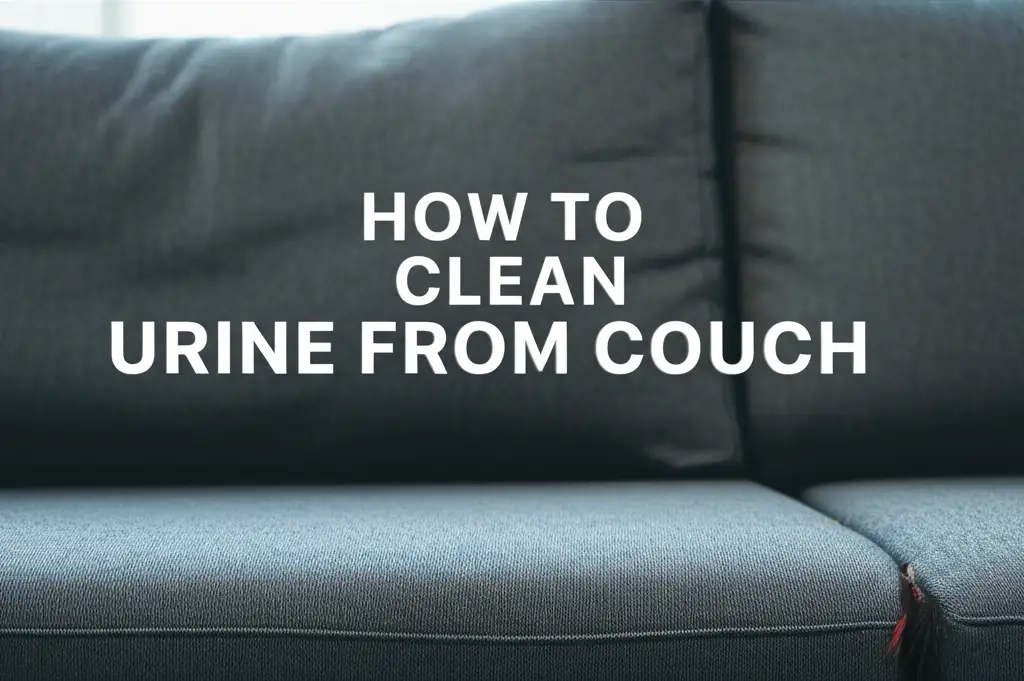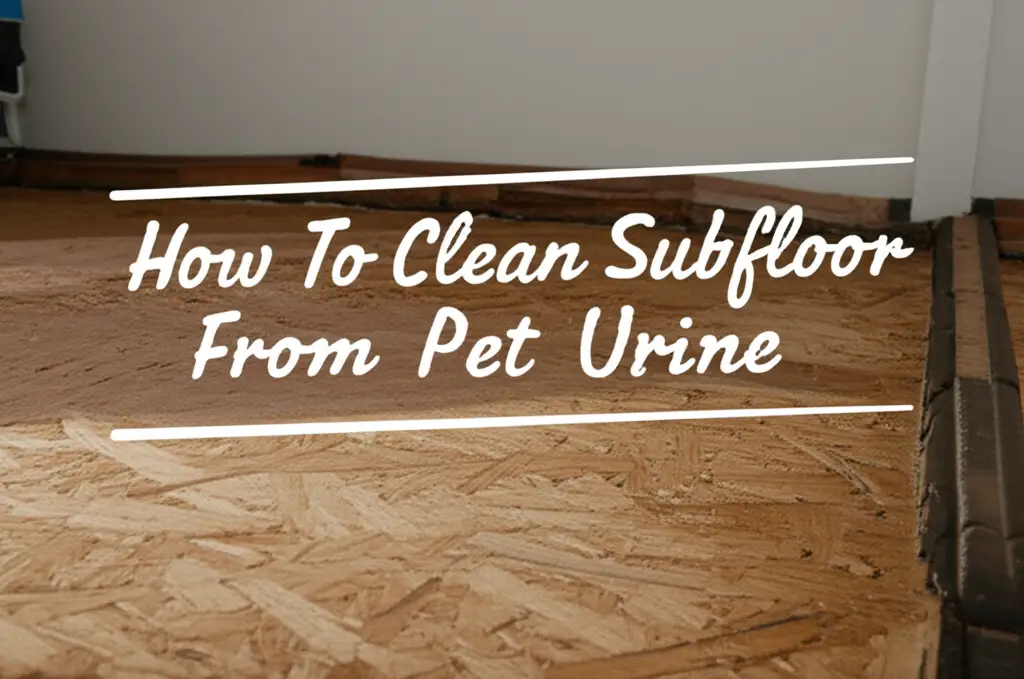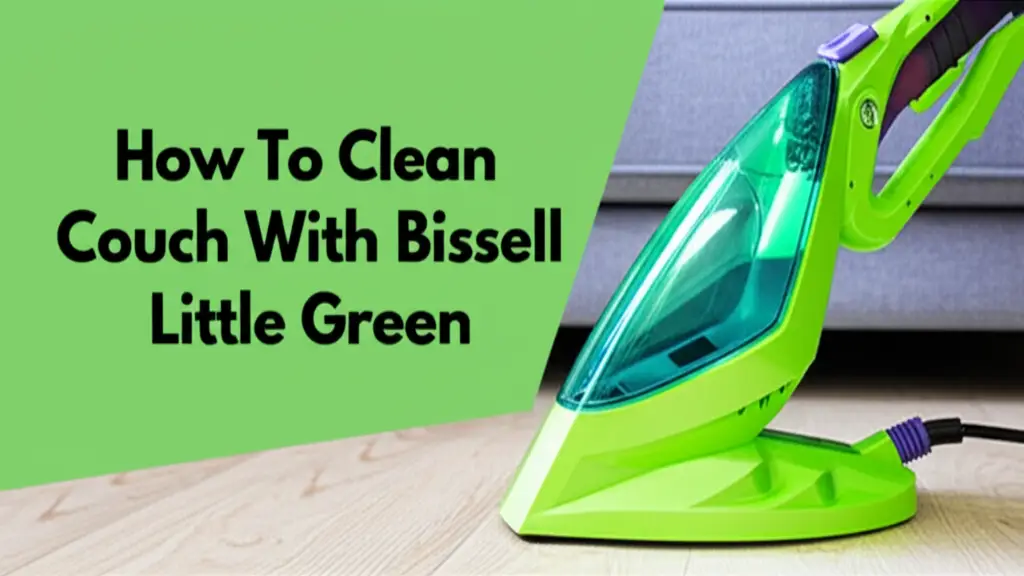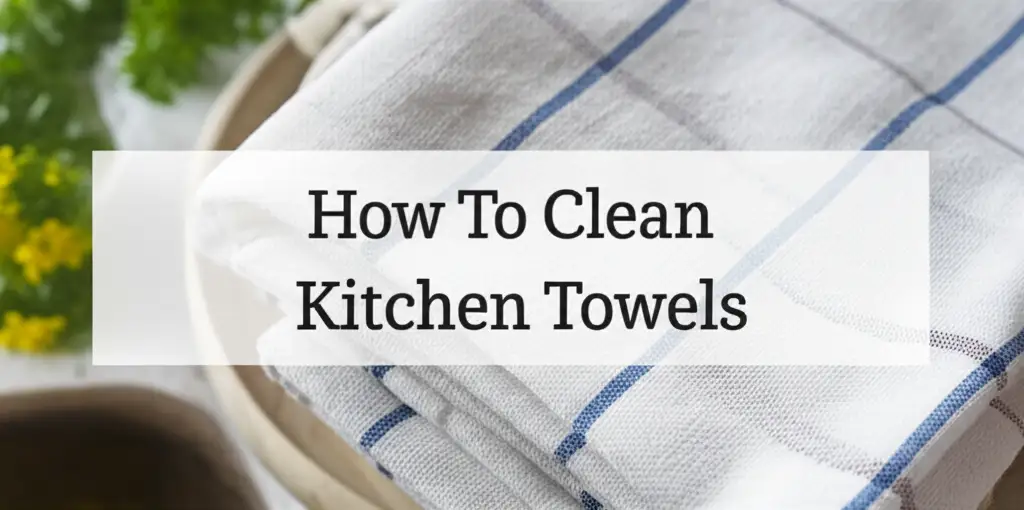· Home Cleaning · 17 min read
How To Clean Pee Off A Couch
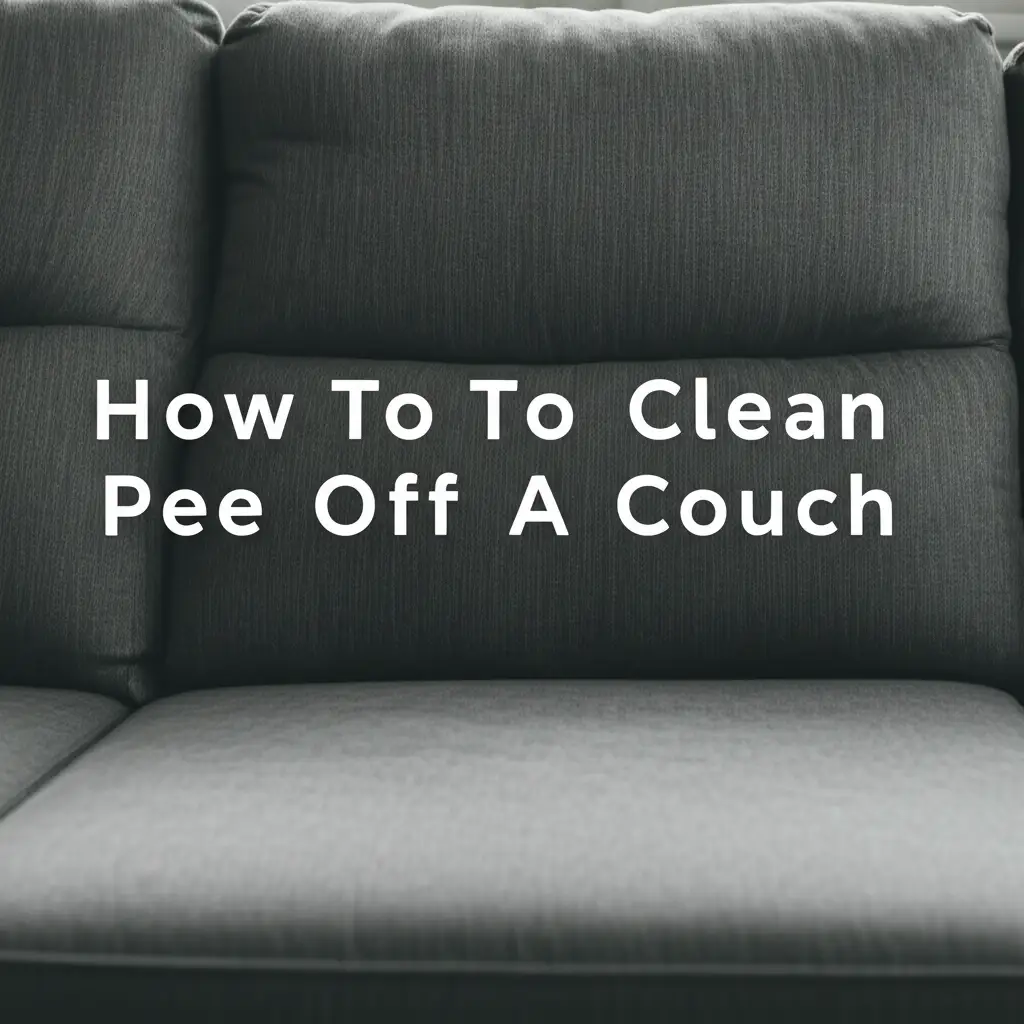
Restore Your Couch: How to Clean Pee Stains & Odors
Oh no, a couch pee accident! This situation happens to many of us. Whether from a pet, a child, or another unexpected event, urine on your favorite sofa is distressing. The stain is one problem, but the lingering smell is often worse. You need to act fast and use the right approach to fix it.
Learning how to clean pee off a couch correctly saves your furniture. It also keeps your home smelling fresh. This guide helps you tackle both fresh and old urine stains. We cover various couch materials and provide clear steps. You will learn about immediate actions, DIY remedies, and commercial products. This article gives you the power to restore your couch.
Takeaway
- Act fast to absorb fresh urine immediately.
- Identify your couch’s fabric type before cleaning.
- Use enzymatic cleaners for best odor removal results.
- Combine blotting, cleaning, and drying steps carefully.
- Consider professional help for stubborn or delicate cases.
You can clean pee off a couch by first blotting fresh urine quickly with absorbent towels. Next, apply a cleaning solution like a mix of white vinegar and water, or an enzymatic cleaner, to break down the urine. Blot the area repeatedly, then allow it to air dry fully.
Act Fast: Immediate Steps to Tackle Fresh Urine
A fresh pee stain on your couch needs quick action. Time is essential for preventing permanent damage and odor. The quicker you address the accident, the better your chances of full removal. I always tell people to grab paper towels right away. This initial step prevents the urine from soaking deeper into the couch cushions.
Blotting, Not Rubbing
You must blot the urine. Do not rub the area. Rubbing spreads the urine and pushes it further into the fabric fibers. This makes the stain larger and harder to remove. Instead, use clean, absorbent paper towels or a thick cloth. Press firmly onto the wet spot. Hold it there for a few seconds.
Lift the towel and see the urine it absorbed. Repeat this process with fresh towels until no more liquid transfers. You want to get as much urine out as possible before cleaning solutions come into play. This also helps reduce the eventual smell. This simple act saves you a lot of effort later.
Initial Rinse and Dilution
After blotting most of the liquid, you can lightly dilute the remaining urine. Mix a small amount of cool water with a tiny bit of mild dish soap. Do not drench the area. Use a spray bottle or a damp cloth to apply this solution lightly to the stained spot. This helps to loosen the urine that has settled into the fabric.
Again, blot the area with clean, dry towels. The goal is to lift more of the urine residue. You are essentially flushing out the area. Ensure you do not over-wet the couch. Too much moisture can cause new problems like mildew or water stains. This careful dilution sets the stage for deeper cleaning.
Understanding Your Couch: Fabric Types and Cleaning Codes
Knowing your couch’s material is a crucial first step. Different fabrics react differently to cleaning agents. Using the wrong cleaner can ruin your furniture. Always check the care tag on your couch. This tag provides important cleaning instructions and codes.
Deciphering Cleaning Codes
Couch manufacturers use specific codes to guide cleaning. These codes tell you what cleaning methods are safe for your upholstery. Here are the common codes you might find:
- “W” (Water-based cleaner): You can use water-based cleaning solutions on these fabrics. Many common household cleaners work here. This is the most common and easiest code to clean.
- “S” (Solvent-based cleaner): These fabrics require solvent-based, water-free cleaners. Water can stain or shrink these materials. This code means you need special dry-cleaning solvents.
- “WS” (Water or Solvent-based cleaner): You have more flexibility with these fabrics. Both water-based and solvent-based cleaners are safe to use. This offers the most options for cleaning.
- “X” (Vacuum only): These fabrics cannot be cleaned with any liquid. You can only vacuum them. This is the most delicate type and often needs professional cleaning for stains.
If your couch has an “S” or “X” code, be very careful. You might need professional help. Using water on an “S” code fabric can leave a permanent water ring. For an “X” code, any liquid will cause damage.
Patch Testing Your Couch
Before you apply any cleaning solution to the main stain, always do a patch test. Find an inconspicuous area of the couch. This could be a hidden spot on the back or under a cushion. Apply a small amount of your chosen cleaning solution to this test spot. Let it sit for a few minutes.
Blot the area with a white cloth. Check for any discoloration, shrinking, or damage to the fabric. If the fabric looks good, you can proceed with the cleaning. If you see any negative reactions, do not use that solution. Find another method or call a professional. This simple test prevents larger, irreversible damage.
DIY Solutions: Effective Homemade Pee Cleaners
You can often clean pee stains using common household items. These DIY solutions are effective for many fresh and older stains. They also help neutralize odors. These methods are simple and cost-effective.
Baking Soda Power
Baking soda is a natural deodorizer. It helps absorb odors and moisture from urine. After blotting the wet area, sprinkle a generous amount of baking soda over the stain. Make sure the entire affected area is covered. Let the baking soda sit for several hours. For best results, leave it overnight. The longer it sits, the more odor it absorbs.
After the baking soda has done its work, vacuum it up. You can use a brush attachment to ensure you get all the powder. This step helps pull out the remaining moisture and smell. For tough odors, you might need to repeat this process. Baking soda is safe for most fabrics. It is a powerful, yet gentle, cleaning agent. Many people use baking soda for various cleaning tasks. You can learn more about how to use baking soda and vinegar for cleaning around the house on our website. Learn more about cleaning with vinegar and baking soda.
Vinegar’s Role
White vinegar is an excellent natural disinfectant and odor neutralizer. Its acidic nature helps break down the uric acid crystals in pee. This removes both the stain and the smell. Mix equal parts white vinegar and water in a spray bottle. Shake the bottle gently to combine the liquids.
Lightly spray the vinegar solution onto the pee stain. Do not oversaturate the couch. Let the solution sit for about 10-15 minutes. Then, blot the area thoroughly with clean paper towels or a cloth. Repeat this process if needed. The vinegar smell will dissipate as it dries. You can even combine baking soda and vinegar for a more robust cleaning. First, use the baking soda, then follow with the vinegar solution. This dual action is very effective.
Dish Soap Mix
A mild dish soap solution can also help. Dish soap works as a gentle degreaser and cleaner. Mix a small amount of mild liquid dish soap with cool water. Use about one teaspoon of soap per two cups of water. Stir it gently to create a bubbly solution.
Dip a clean cloth into the soapy water. Wring out excess liquid. You want the cloth damp, not dripping wet. Dab the pee stain with the soapy cloth. Work from the outside of the stain inward. This prevents the stain from spreading. Follow up by dabbing with a clean, damp cloth to rinse. Then, blot dry with a clean towel. This method is good for surface stains and initial cleaning.
Commercial Cleaners: Choosing the Right Product
Sometimes, DIY methods are not enough, especially for stubborn stains or strong odors. Commercial cleaners offer more power. They contain specific enzymes or chemicals to target urine components. Picking the right one is important.
Enzymatic Cleaners
Enzymatic cleaners are often the best choice for pet urine. These cleaners contain enzymes that break down the uric acid crystals in urine. These crystals are what cause the strong, persistent odor. The enzymes literally “eat” the odor-causing bacteria. Look for cleaners specifically labeled for “pet urine” or “bio-enzymatic” formulas.
To use an enzymatic cleaner, first blot up any liquid urine. Then, follow the product’s instructions. You typically spray or pour the cleaner onto the stain. You must allow it to sit for a recommended time, often 10-30 minutes, or even longer for old stains. The enzymes need time to work. After that, blot the area dry. Repeat applications might be necessary for deep stains or strong odors. Always test these cleaners in an inconspicuous area first.
Odor Neutralizers
Odor neutralizers are different from enzymatic cleaners. They do not break down the uric acid. Instead, they trap or mask the smell. Some odor neutralizers use activated charcoal or other absorbing agents. Others contain fragrances to cover the scent. While helpful for temporary relief, they might not eliminate the source of the odor.
You can use odor neutralizers after cleaning the stain. They act as a final step to ensure no lingering smell. Spray them lightly over the treated area. Let the couch air dry completely. For the best results, combine an enzymatic cleaner with an odor neutralizer if needed.
Spot Cleaners and Machines
For larger areas or deeper stains, consider a spot cleaning machine. Small portable carpet and upholstery cleaners are very effective. These machines spray water and cleaning solution onto the fabric. Then, they use suction to pull the dirty water back up. This deep cleaning method removes more urine and residue. A popular option is the Bissell Little Green machine. It is compact and powerful for couch cleaning. Learn how to get the most out of your Bissell Little Green machine by visiting our guide. Check out our guide on cleaning your couch with a Bissell Little Green.
Always use the recommended cleaning solution for your machine. Over-wetting the couch is a risk with these machines. Extract as much water as possible after cleaning. Allow the couch to dry completely to prevent mold or mildew growth. These machines offer a professional-level clean at home.
Tackling Old, Dried Pee Stains and Persistent Odors
Dried urine stains present a bigger challenge than fresh ones. The uric acid crystals have dried and bonded with the fabric. The odor also becomes much stronger over time. Do not despair; you can still clean these effectively. It just requires more patience and often multiple steps.
Re-wetting Old Stains
The first step for old, dried pee stains is to re-wet the area. This reactivates the urine crystals. You can use a spray bottle with warm water. Lightly spray the entire affected area. You want to dampen the stain, but not soak it. Let the water sit for a few minutes. This process helps to loosen the dried urine from the fabric fibers.
After re-wetting, blot the area thoroughly with clean towels. This helps to pull up some of the rehydrated urine. This step prepares the stain for deeper treatment. You are essentially bringing the old stain back to a “fresh” state for cleaning. This makes subsequent cleaning steps more effective.
Deep Cleaning for Odor
Persistent odors are the main problem with old urine stains. The smell comes from uric acid crystals breaking down. Enzymatic cleaners are your best friend here. After re-wetting and blotting, apply a generous amount of enzymatic cleaner. You need to saturate the area enough for the enzymes to reach all the urine.
Cover the treated area with plastic wrap or an old towel. This keeps the cleaner from drying out too quickly. The enzymes need moisture and time to work. Leave it on for several hours, or even overnight. Follow the product’s instructions for the maximum recommended time. Then, remove the cover and blot up the excess cleaner. Allow the area to air dry completely. You may need to repeat this process several times for very old or strong odors.
Layering Treatments
For very stubborn old stains and odors, you might need to layer different treatments. You could start with re-wetting and an enzymatic cleaner. After it dries, apply a heavy layer of baking soda. This helps absorb any remaining moisture and odor. Let it sit for a full day or two. Then, vacuum up the baking soda.
If a slight odor remains, you can try an odor neutralizer spray. For deep-seated odors, consider injecting the enzymatic cleaner directly into the cushion. Some pet stores sell special syringes for this. Be very careful not to over-saturate the inner cushion. Always ensure the couch dries completely between treatments. This multi-step approach gives the best chance for full odor and stain removal.
Specific Fabric Care: Cleaning Pee from Different Couches
The type of couch fabric dictates the cleaning method. What works on one material can ruin another. Always check your couch’s cleaning code before you start. This ensures you do not cause more damage.
Fabric Couches (Cotton, Linen, Synthetics)
Most fabric couches, like those made of cotton, linen, or synthetic blends, are “W” or “WS” coded. This means you can use water-based cleaners. These materials are generally robust and forgiving. For a fresh stain, blot immediately. Then, use your chosen solution: a mix of vinegar and water, mild dish soap, or an enzymatic cleaner.
Apply the cleaner sparingly. Do not soak the fabric. Blot the area gently. Rinse by dabbing with a clean, damp cloth. Always blot dry thoroughly. Air drying is best. You can use a fan to speed up the drying process. For deeper cleaning or older stains, a portable upholstery cleaner is very effective on these materials. Be careful not to create water rings on light-colored fabrics.
Leather Couches
Cleaning pee off a leather couch requires a different approach. Leather is a delicate material. Water and harsh chemicals can damage it. For fresh urine, blot it up immediately with a soft cloth. Do not rub. Then, wipe the area with a slightly damp cloth using only plain water. Follow up with a dry cloth.
For deeper cleaning, use a dedicated leather cleaner or a mild soap solution. Mix a few drops of mild soap (like saddle soap or specific leather soap) with distilled water. Dampen a soft cloth with this solution. Gently wipe the affected area. Do not saturate the leather. Wipe off any soap residue with a clean, damp cloth. Finish by drying and conditioning the leather. Leather conditioner keeps the material supple and prevents cracking. Test any product on an inconspicuous spot first.
Microfiber Couches
Microfiber couches are often easy to clean. They are typically coded “W” or “WS.” Many microfiber fabrics are stain-resistant. For urine stains, blot up the excess liquid quickly. Use a clean, dry cloth.
Then, mix rubbing alcohol with water in equal parts, or use a mild soap and water solution. Apply this mixture to a clean cloth. Dab the stained area gently. The alcohol helps lift the stain and dries quickly, preventing water spots. For tough stains, you can also use a small amount of clear dish soap with water. After cleaning, use a clean, dry cloth to blot the area. You can also brush the microfiber with a soft-bristled brush after it dries. This helps restore the nap of the fabric.
Preventing Future Accidents and Maintaining a Clean Couch
Preventing future pee accidents is better than constant cleaning. This is especially true if you have pets or small children. A little effort in prevention saves a lot of cleaning time later. Maintaining your couch also keeps it looking good longer.
Training Pets and Children
If pets are the cause, focus on their training. Reinforce proper potty training with consistent walks or litter box use. Clean accidents thoroughly to remove all scent. Pets tend to re-offend in areas where they smell their own urine. Consider hiring a professional pet trainer if accidents continue. For children, establish clear potty training routines. Use waterproof mattress pads or special training pants. Accidents happen, but consistent training reduces their frequency.
Provide plenty of opportunities for pets to relieve themselves outside. Make sure their designated potty area is clean and accessible. Reward good behavior immediately. A well-trained pet is less likely to have indoor accidents. You can also check out tips for cleaning turf from dog pee for specific outdoor areas.
Couch Protectors
Physical barriers can protect your couch from future accidents. Waterproof couch covers or slipcovers are excellent options. They come in various styles and colors to match your home decor. These covers create a barrier between the couch fabric and any liquid spills. You can simply remove and wash the cover if an accident occurs.
Consider waterproof furniture pads or pet blankets. These can be placed on specific seating areas where accidents are most likely. They are easy to wash and offer good protection. For delicate or expensive couches, a full, custom-fit slipcover provides the best protection. Investing in a good protector saves your couch from future damage.
Regular Maintenance
Regular couch maintenance helps keep it clean and fresh. Vacuum your couch regularly using an upholstery attachment. This removes dust, dirt, and pet hair. It also helps remove any dried residue you might miss. Spot clean small spills immediately. Do not let them sit and become stubborn stains.
Rotate cushions frequently to ensure even wear. Fluff them to maintain their shape. For leather couches, condition them regularly to prevent cracking. Air out your couch periodically. Open windows to allow fresh air to circulate. This helps reduce lingering odors. A well-maintained couch is less likely to attract new accidents. It also stays in good condition for many years.
FAQ Section
Can dried pee ever be fully removed from a couch?
Yes, you can often fully remove dried pee stains and odors from a couch. It requires more effort than fresh stains. You must re-wet the dried urine to reactivate it. Then, use enzymatic cleaners and sometimes multiple applications. Patience and thorough blotting are important for success.
What is the best enzymatic cleaner for pet urine?
The best enzymatic cleaner for pet urine often depends on user preference. Many reputable brands offer effective formulas. Look for cleaners specifically labeled for pet urine. Check reviews for products that mention strong odor elimination. Nature’s Miracle, Rocco & Roxie, and Simple Solution are popular choices among pet owners.
Will vinegar damage my couch fabric?
Vinegar is generally safe for most “W” or “WS” coded fabrics. Always dilute white vinegar with water before applying it to your couch. Perform a patch test in an inconspicuous area first. Avoid using vinegar on delicate fabrics like silk, rayon, or acetate, as it might cause damage or discoloration.
How do I get rid of the lingering pee smell?
To get rid of lingering pee smell, you need to break down the uric acid crystals. Enzymatic cleaners are best for this. Apply them thoroughly and allow sufficient dwell time. After cleaning, sprinkle baking soda over the area and let it sit for hours to absorb any remaining odor. Good air circulation also helps.
When should I call a professional cleaner for pee stains?
You should call a professional cleaner for pee stains if the stain is very large or old. If the odor persists after multiple attempts, professionals have stronger tools and chemicals. For delicate fabrics like silk, velvet, or “S” or “X” coded materials, professional help is necessary. They prevent damage and ensure a thorough clean.
Conclusion
A pee accident on your couch can feel like a disaster. However, with the right knowledge and tools, you can effectively clean pee off a couch. We have discussed immediate actions, different cleaning solutions, and specific fabric care. Remember to act fast, understand your couch’s material, and choose the correct cleaner. Whether you use DIY methods or commercial products, patience is key.
Restoring your couch keeps your home clean and fresh. Do not let an accident ruin your favorite piece of furniture. Use the steps outlined in this guide to tackle any urine stain. A clean couch makes your living space more enjoyable. For more cleaning tips and guides, explore our website. You can find solutions for every cleaning challenge.
- pet urine
- urine removal
- couch cleaning
- stain removal
- odor removal
- fabric care
- leather care

